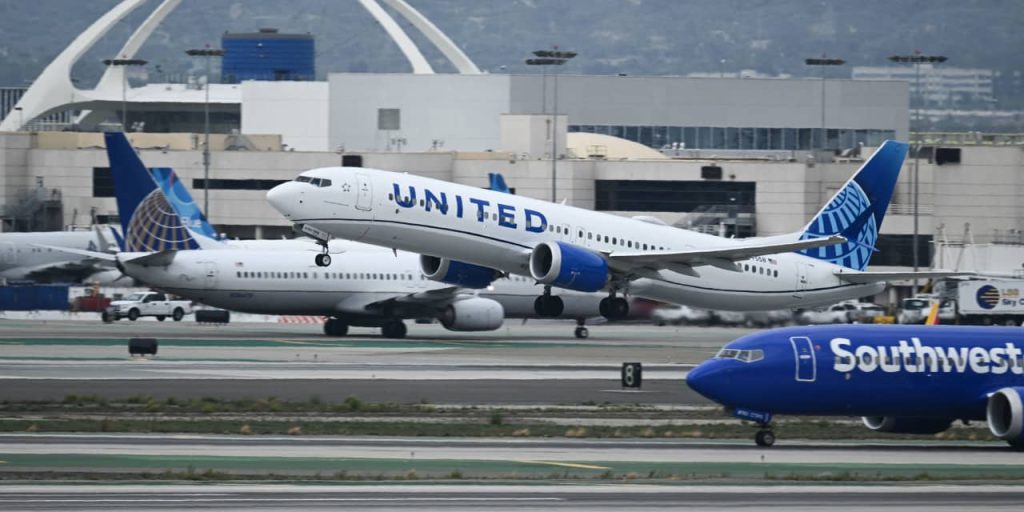United Airlines flies three versions of the 737 MAX, the MAX-7, MAX-8, and MAS-9.
Patrick T. Fallon / AFP via Getty Images
The 737 MAX is Boeing’s highest-volume plane and arguably its most important. But it doesn’t make any money.
Boeing
will need to change that in the coming years. The good news for investors: It can, according to J.P. Morgan.
For analyst Seth Seifman, though, MAX profitability is at least a few years away.
“One critical component of the $6 billion-plus of free cash flow growth Boeing anticipates between 2023 and the 2025 to 2026 timeframe is the 737 program,” wrote Seifman, in a research report out Wednesday.
“But even with close to 400 deliveries likely in 2023, the 737 contribution to cash flow is quite small, with program cash costs running well in excess of what is recognized on the P&L,” he said.
The reasons why MAX isn’t pulling its weight yet, at least with respect to cash flow, aren’t hard to pin down, added Seifman. They include product mix, volume, and quality control. Boeing has had to rework planes after they left the assembly line.
Things can turn around, to be sure. Investors can track any progress by looking at Boeing’s “deferred production balance,” which is disclosed quarterly.
Aircraft accounting is different from how most other companies keep their books. It takes billions of dollars and several years to bring a new plane to market—but the aircraft will, hopefully, sell for 20 years. Matching up all the revenue with expenses is more of a job.
Boeing books the revenue for a plane when it sells. It also assumes an average cost. That generates earnings on the profit and loss statement. Actual costs, however, can differ from the estimated costs. When they are larger, the deferred production balance for the 737 MAX program grows.
When the deferred production balance starts to shrink, costs are coming down. It’s a sign the business is operating more smoothly.
That isn’t happening yet. Deferred production costs for the 737 MAX program are $5.4 billion, up from $3 billion at the end of 2022. Siefman expects the balance to stabilize next year and start falling in 2025 or 2026.
One thing the analyst believes will help is product mix. Boeing is delivering a lot of MAX jets to customers that get the best pricing, he wrote, including the likes of
Southwest Airlines
and
Ryanair.
That trend will moderate in the coming years.
Along with customer mix, Beoing will have to improve quality and ramp up production—and work off the MAX inventory built up during the worldwide grounding of the jets for nearly two years. From March 2019 to November 2020, the planes didn’t fly on an order from the Federal Aviation Administration after two deadly crashes within five months.
In the cash flow statement, all this comes out in the wash. The deferred production balance is just a good way for investors to see how it’s all going for Boeing.
Wall Street expects Boeing to generate about $3.2 billion in free cash flow in 2023. If that’s the case, this year would be the second consecutive 12 months of positive free cash flow after the trying times of the pandemic and worldwide grounding.
Boeing produced a cumulative free cash flow of negative $28.4 billion between 2019 and 2021, according to FactSet.
Analysts project a 2025 free cash flow of $11.3 billion, about $8 billion higher than this year’s number. Wall Street buys into Boeing’s improvement goals.
So does Seifman. He rates the stock Buy and raised his price target to $270 from $245.
In midday trading Thursday, the stock was down 0.5%. The
S&P 500
and
Dow Jones Industrial Average
were up 0.7% and 0.2%, respectively.
Shares are up about 34% over the past 12 months, about 18 percentage points better than the S&P 500.
Investors are excited about the recovery in global air travel after the pandemic.
Through October, Boeing delivered 298 MAX jets out of 405 jets, according to its commercial website. Single-aisle aircraft the size of a 737 are the workhorses of the commercial aerospace industry.
Write to Al Root at [email protected]
Read the full article here




